agniusm said:
measure the resistance of the cables and it is 0.3ohm per cable. Cables are 33.18m2 so probably 2.3AWG.
Multimeter are not designed to measure resistance much lower than 0.3-0.5 Ohm, because what you measured is in fact the resistance of your multimeter circuitery + multimeter probes.
At 33.18 mm2, for 2 meter lenght, if it's copper (it's resistivity is ρ = 1.68×10^−8 Ohm . m), you can expect that it adds 0,00101266 Ohms of resistance... Using Claude Pouillet's law adn simple formula R = ρ . l/A (https://en.wikipedia.org/wiki/Electrical_resistivity_and_conductivity ). So 1.01266 milliOhm is far too low to be measured with multimeter...
Still, at a very heavy INITIAL load of 113.9A ---> dV = R x I means VOLTAGE DROP because of wire part (not cells or NESE part) is dV = 113.9A x 0.00101266 Ohm = 0.115 V
And at the end of the experiment FINAL LOAD of 75.9A --> dV = 75.9A x 0.00101266 Ohm = 0.077 V
So the real voltage at the NESE post could be assumed to be :
INITIAL : 3.440 V + 0.115 V = 3.555V @ 113.9A
FINAL : 2.892 +0.077 V = 2.969 V @ 75.9A
Of course, this is still an approximation, the real way to do it would be to hook voltmeter to NESE posts directly.
I won't redraw the whole graph extrapolation, but knowing the new wire info, you started more at 92% SOC and finished more at 10% SOC.
At 92% SOC, resistance of LG HE2 seems more like 25.0 mOhm than at 75% SOC where it was 23.4 mOhm or at 8% SOC where it was 17.8 mOhm.
So for 6P cells in theory = 4.166 mOhms (INITIAL at 92% SOC) and 2.967 mOhm (FINAL at 8% SOC).
Anyways... Rough estimate but a bit refined with cable data now :
INITIAL
NESE empty box at ambiant temp Resistance (1S6P) = 6.093 mOhm (experiment) - 1.013 mOhm (cable) - 4.166 mOhms (6Cells at 92% SOC) =
0.914 mOhm
FINAL
NESE empty box hot at 62°C Resistance (1S6P) = 6.152 mOhm (experiment) - 1.013 mOhm (cable) - 2.967 mOhms (6Cells at 8% SOC) =
2.172 mOhm
So all in all, each 6P-NESE module would add in itself between 0.914 to 2.172 mOhm to the cells in parallel (6 cells).
Minus 3.0 mOhm from 6P cell's intrinseque resistance (betwenn 4.2 and 3.0 mOhm depending on SOC).
Knowing that, if I 'd make a 14S6P pack with HE2 cells, the solderless module would add 12.8 to 30.4 mOhm to the cells IR (58.3 mOhm to 41.5 mOhm depending on SOC).
SO all in all, a 14S6P pack of HE2 with 14 6P-NESE modules would total 71 mOhm @ 92%SOC [14 x (4.166 mOhm + 0.914 mOhm)] to 72 mOhm at 8% SOC [14 x (2.967 mOhm + 2.172 mOhm)]
So pulling 30A on that 14S6P 71 mOhm pack, the voltage drop would be from 57.88V (4.134V per cells) to 55.75V.... A 2.13V drop @ 30A load on that 6P pack ( dP = R x I = 0.071 Ohm x 30A) and heat lost would be 64 Watts (dP = dV x I = 2.13V x 30A), while the remaining 1672W would be injected into the eBike controller ( P = V x I = 55.75 x 30A)...
PS : For resistance calculations, I assumed the big cable was exactly 2,000000 meters long roundtrip. Again, best way to do it is measure voltage right at thge NESE module post... Crude estimate here). You see how such a small factor mad a big change on calculated resistance of 6P-NESE empty module resistance values from my post above.... Almost half less. Good thing we know about the cable...
Good stuff !
Matador
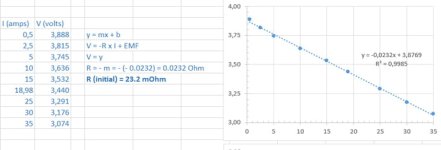
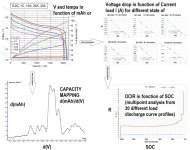
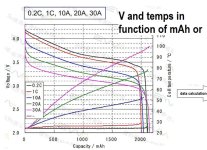
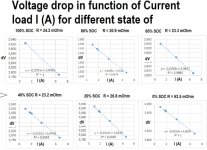
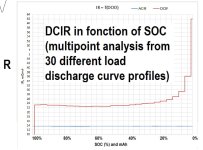
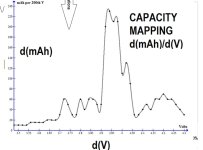
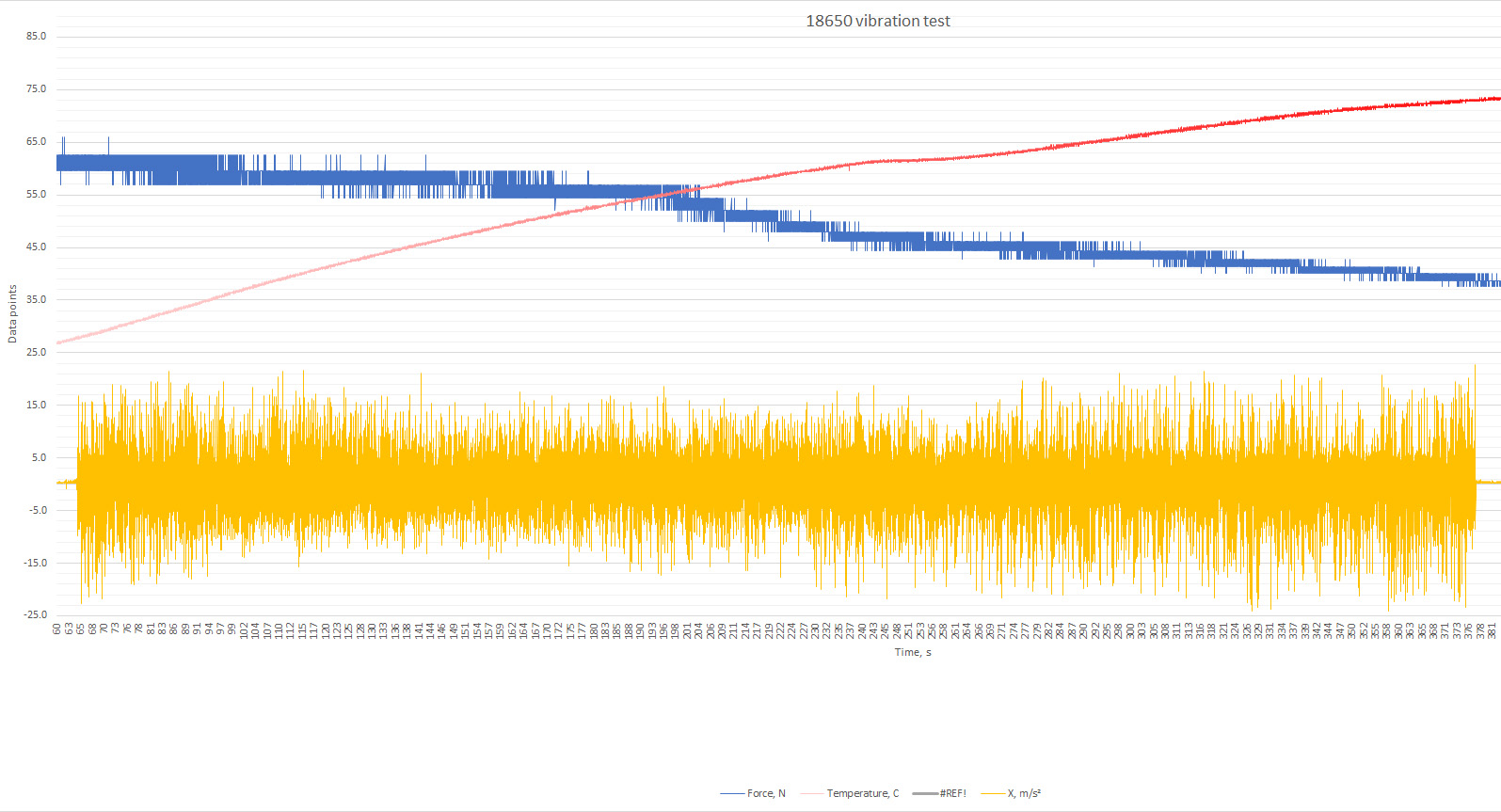
I mean you can dry cells at this rate and NESE connections are way lower than cells them selves which means in this system, only limiting factor is cells, not the kit. I am happy camper now.
